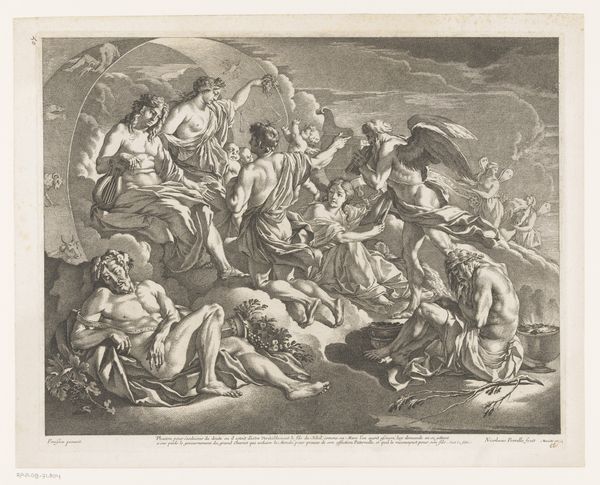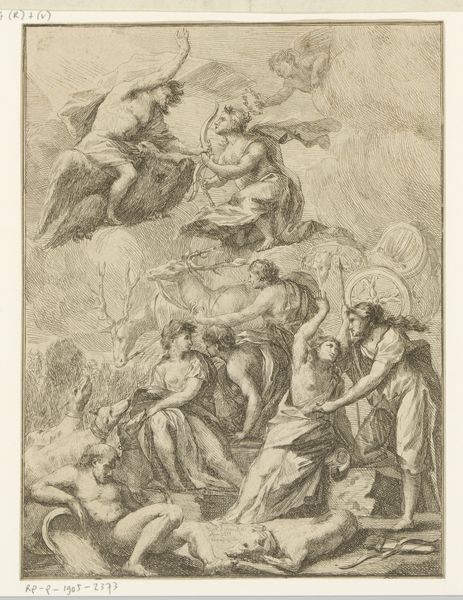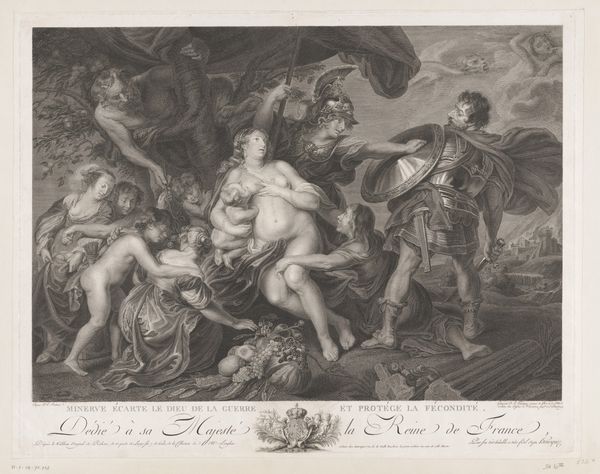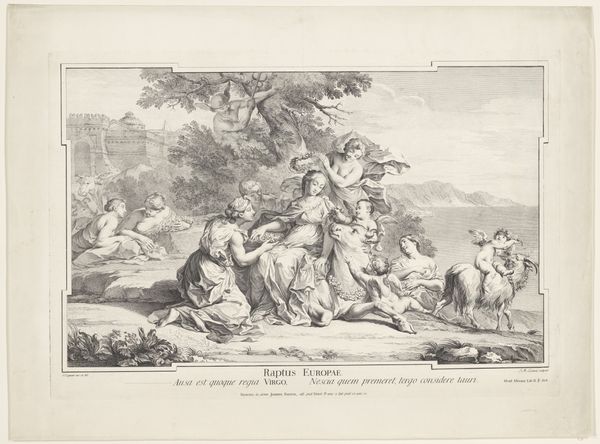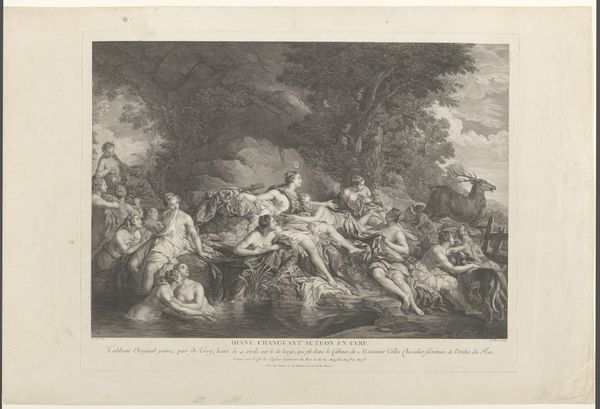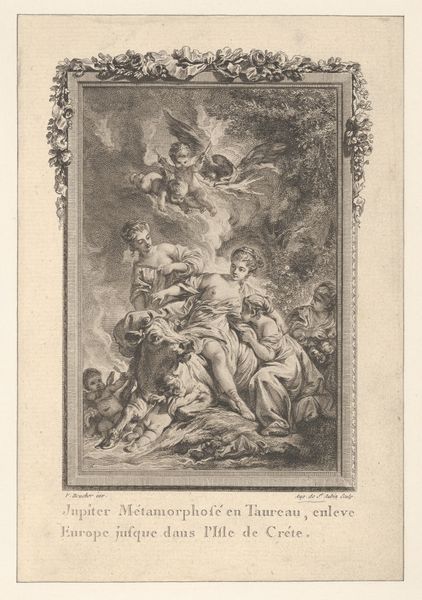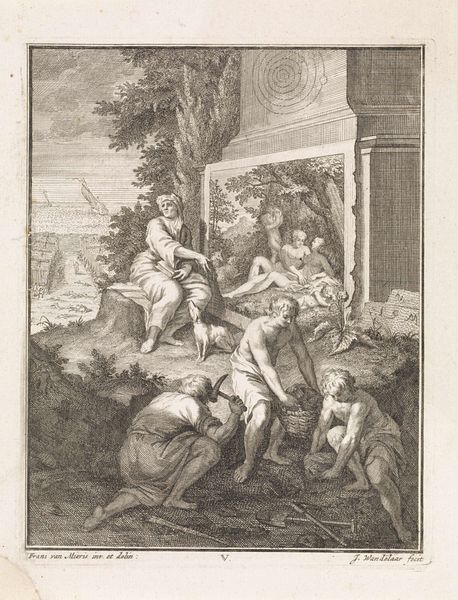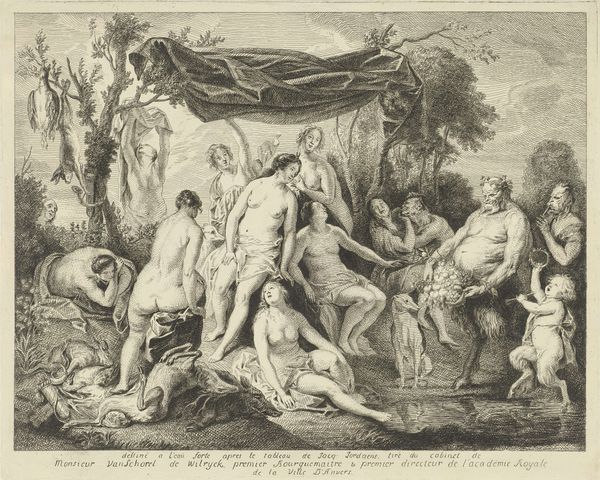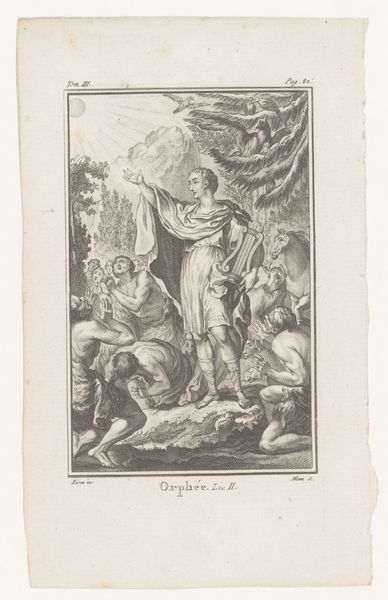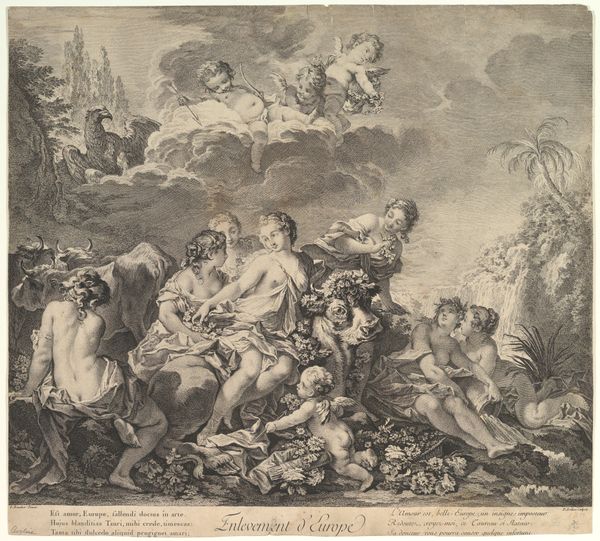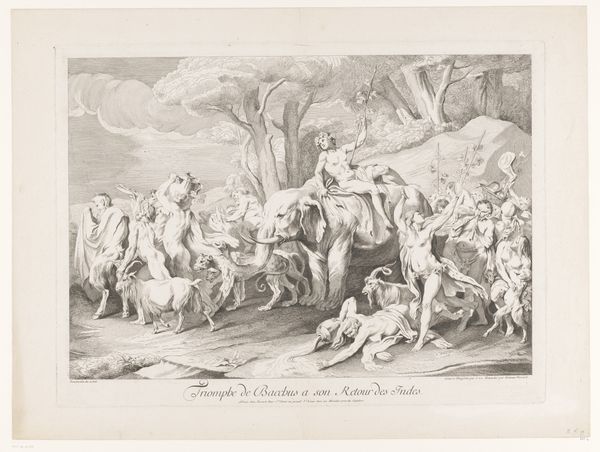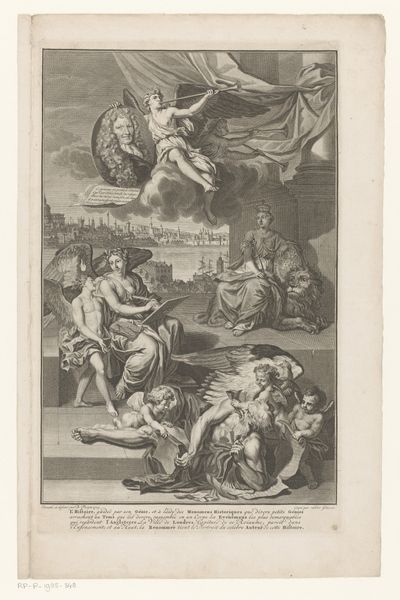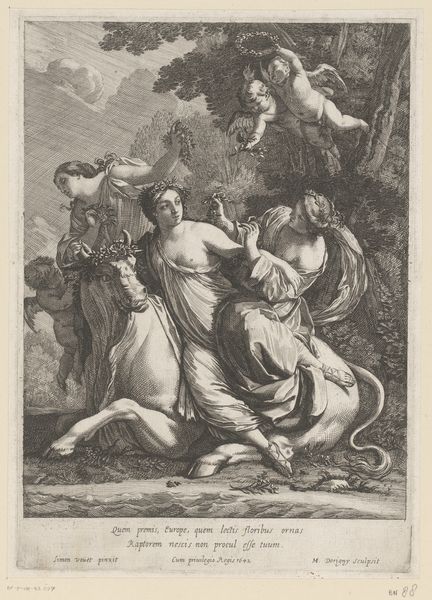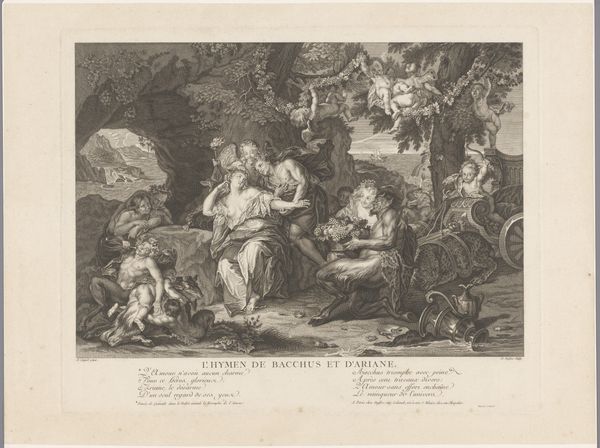
print, engraving
#
allegory
# print
#
old engraving style
#
landscape
#
figuration
#
history-painting
#
engraving
#
rococo
Dimensions: height 490 mm, width 375 mm
Copyright: Rijks Museum: Open Domain
Curator: So, we're looking at "The Abduction of Europa," a print, an engraving to be exact, by Laurent Cars from around 1752. It is based on a painting by François Le Moine. The composition captures a scene brimming with both elegance and impending drama, a sort of Rococo-infused history painting. What are your immediate impressions? Editor: Chaotic. And floral, definitely floral. A frolic about to go very, very wrong. There's an angelic being nestled high in the trees, almost like a voyeur, watching a rather dubious interaction unfolding down below. I imagine he's probably used to these things if that's the only place to sit in this story. What about the historical context, the "why" behind such a dramatically playful piece? Curator: Well, Europa's abduction is a classic mythological tale, often interpreted as an allegory for the origins of European civilization itself, though the specifics can vary significantly based on the cultural context. During the 18th century, mythological scenes were particularly popular, often serving as vehicles for exploring themes of power, desire, and fate. It allowed artists like Le Moine and Cars to showcase technical skill while also referencing established cultural narratives and engaging with classical ideas about governance, divinity, and the very identity of Europe. The engraving specifically served a didactic purpose, widening the access to those stories but I imagine not everyone could read them like they had intended. Editor: That makes perfect sense! It's like they're playing out a mini-opera of seduction and consequence. But tell me, does it strike you as, maybe a little… lighthearted for such a weighty subject? The billowing fabrics, the almost coy expressions, even the bull, despite being in the process of "abducting," doesn't seem particularly menacing. The delicate line work does a great job of keeping it on the bright side of that seduction story though. Curator: You hit upon something crucial. Rococo, as a style, favored grace, ornamentation, and a certain levity. So while the underlying story might have darker implications, the visual treatment emphasizes pleasure and beauty, even in a moment of crisis. This also reflected the tastes and patronage of the French court, where such works were highly valued. They had already read that same seduction story multiple times. Editor: Hmm. That reframes my understanding considerably. It’s less about historical gravitas and more about a stylish, aesthetic experience layered with familiar meaning, like adding vanilla extract into a gothic novel! That puts everything into perspective, really. The chaos feels staged, and a story already in mind is easily digested through the beauty. Curator: Precisely! It encourages us to think about how stories, especially the old ones, gain cultural weight and power through these ever shifting aesthetic prisms and contexts. Editor: Alright, well that went from kidnapping to thoughtful insight faster than that bull. Thanks for shedding light on a deceptively playful abduction, so many things change through style and perspective!
Comments
No comments
Be the first to comment and join the conversation on the ultimate creative platform.
